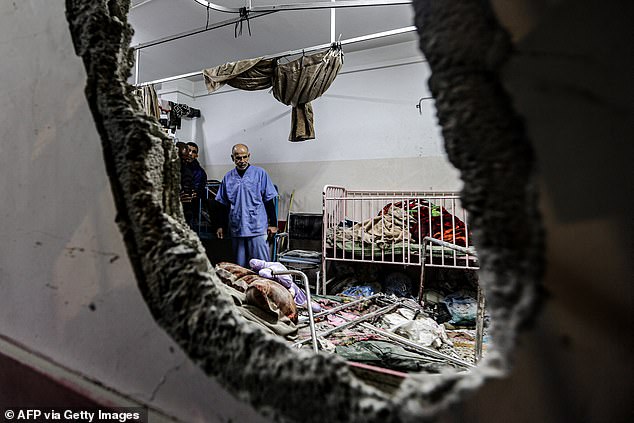Israeli forces stormed southern Gaza’s main hospital on Thursday, just hours after killing one patient and wounding six others inside the complex.
The Israeli military said it was a limited operation searching for the remains of hostages taken by Hamas, but has not yet revealed exactly whose remains they are seeking. The IDF has also not revealed how many soldiers are currently working to find the remains.
The raid came a day after the army attempted to evacuate thousands of displaced people who had taken shelter at the Nasser Hospital in Khan Younis. The southern city has been the main target of Israel’s offensive against Hamas in recent weeks.
While the military said it had “credible intelligence” that Hamas had been holding hostages in the hospital, the largest in the southern Gaza Strip, and that the hostages’ remains may still be inside, it did not release the evidence.
Al Jazeera reported that the IDF gave Nasser’s men until 7 a.m. local time to leave the hospital, and that as of this morning “heavy tank and machine gun fire” could be heard nearby.
The outlet reported that the hospital’s maternity ward, orthopedics unit, and emergency room were attacked by IDF soldiers, and that medical staff were detained and had “their hands tied behind their backs.”
The Israeli army said it was a limited operation to search for the remains of hostages taken by Hamas (File image from Nasser Hospital)
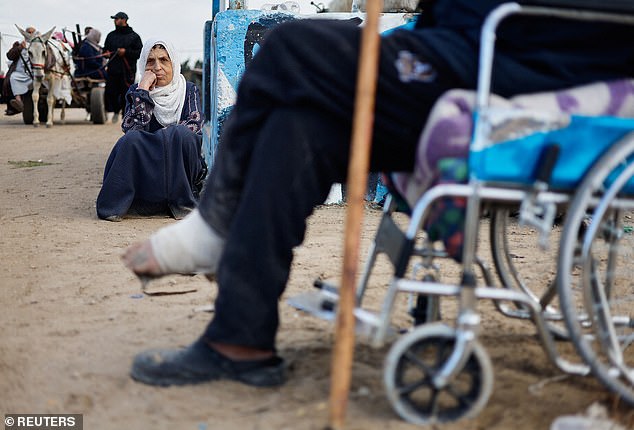
Palestinian patients rest upon arrival in Rafah after being evacuated from the Nasser hospital in Khan Younis due to the Israeli ground operation.
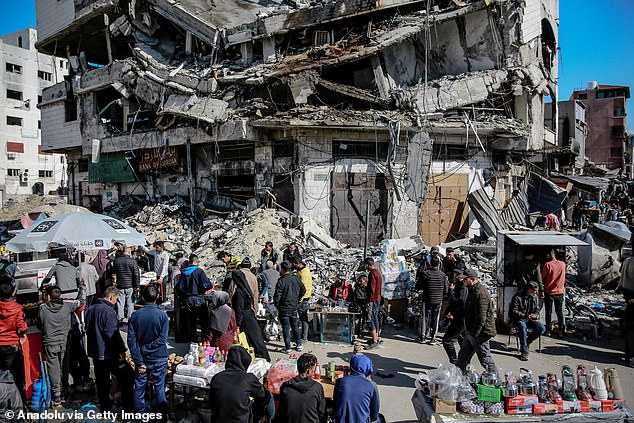
Street vendors are seen selling what little food and essential items they have left on the streets as Palestinians struggle with the rising cost of living due to Israeli attacks on Gaza City.
The Nasser Hospital, in the southern city of Khan Younis, has been the latest focus of operations that have destroyed Gaza’s health sector as it struggles to treat dozens of patients injured in daily bombings.
Video of the aftermath of last night’s strike showed doctors struggling to carry patients on stretchers through a smoke- or dust-filled hallway.
A doctor can be seen using a mobile phone flashlight to illuminate a dark room where an injured man was screaming in pain as gunshots echoed outside. The Associated Press could not authenticate the videos, but they were consistent with its reporting.
Dr. Khaled Alserr, one of the remaining surgeons at Nasser Hospital, told the AP that the seven patients affected Thursday morning were already being treated for past injuries. On Wednesday, a doctor was slightly injured when a drone opened fire on the upper floors of the hospital, he said.
“The situation is getting worse every hour and every minute,” he said.
The Israeli military said on Wednesday it had opened a safe corridor for displaced people to leave the hospital, but would allow doctors and patients to remain there.
Videos and images circulating online showed dozens of people leaving the facility on foot with their belongings on their shoulders. One image showed a family with many elderly members sitting in a horse-drawn cart.
Last month, the military ordered the evacuation of the Nasser hospital and its surroundings. But as at other health centers, doctors said patients could not leave or be relocated safely, and thousands of people displaced by fighting elsewhere remained there.
Palestinians say no place is safe in the besieged territory, as Israel continues to carry out attacks throughout it.
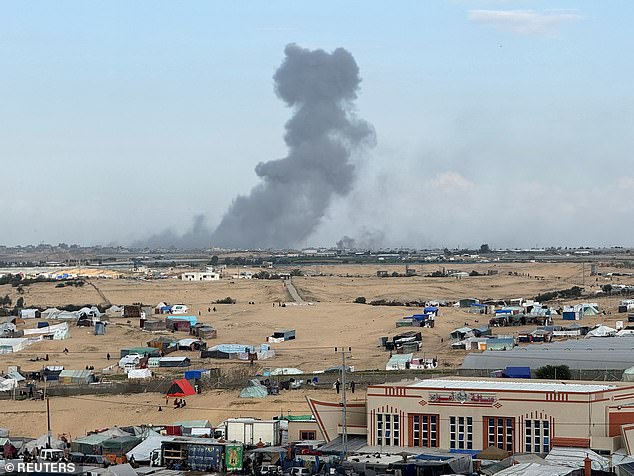
Smoke rises during an Israeli ground operation in Khan Younis, amid the ongoing conflict between Israel and the Palestinian Islamist group Hamas.
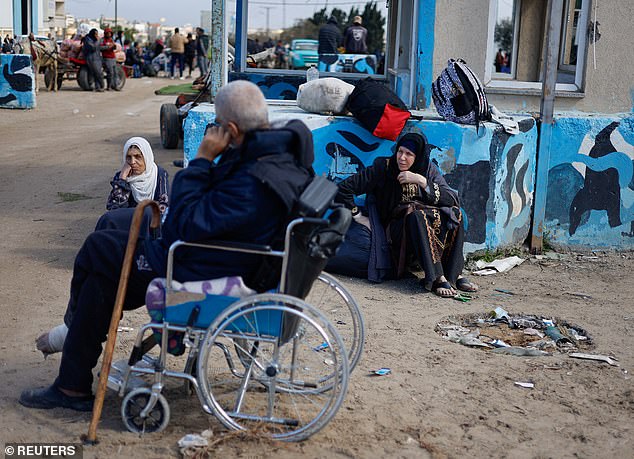
Israel accuses Hamas of using hospitals and other civilian structures to protect its fighters

Separately, Israeli airstrikes killed at least 13 people in southern Lebanon on Wednesday.
“People have been forced into an impossible situation,” said Lisa Macheiner of the aid group Doctors Without Borders, which has staff at the hospital.
“Stay in Nasser Hospital against Israeli army orders and become a potential target, or leave the complex into an apocalyptic landscape where bombings and evacuation orders are part of daily life.”
Israel accuses Hamas of using hospitals and other civilian structures to protect its fighters.
Gaza Health Ministry spokesman Ashraf al-Qidra said Israel had launched a “massive raid” with intense gunfire that injured many of the displaced people who had taken refuge there.
He said the military had ordered doctors to move all patients to an older building that was not adequately equipped for their treatment.
“Many cannot evacuate, such as those with lower limb amputations, severe burns or elderly people,” he said in an interview with the Al Jazeera network.
Separately, Israeli airstrikes killed at least 13 people in southern Lebanon on Wednesday, including 10 civilians – mostly women and children – and only three fighters from the Lebanese militant group Hezbollah, an ally of the militants. Hamas in Gaza.
The attacks came just hours after a rocket attack from Lebanon killed an Israeli soldier in what was the deadliest daily exchange of fire along the border since the start of the war in Gaza on October 7. .
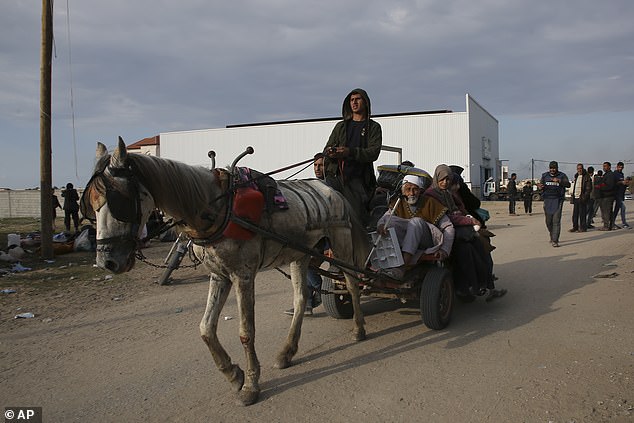
Palestinians fleeing the Israeli offensive on Khan Younis arrive in Rafah, Gaza Strip
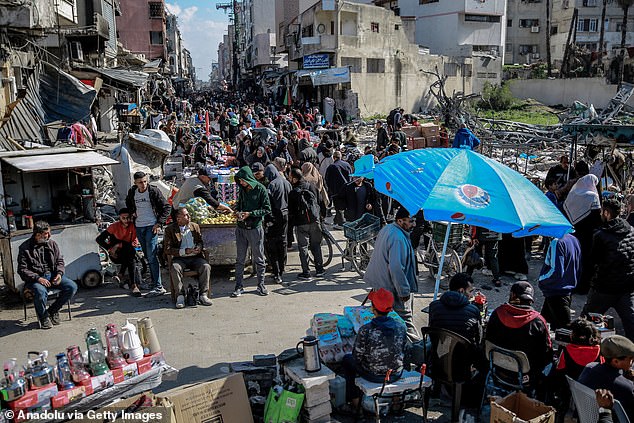
The war began when Hamas militants breached Israel’s formidable defenses on October 7 and devastated several communities, killing about 1,200 people and taking another 250 hostage.
Israel and Hezbollah have exchanged fire along the border almost every day since the start of the war in Gaza. Hezbollah has not claimed responsibility for Wednesday’s rocket attack.
Negotiations over a ceasefire in Gaza appear to have stalled, and Israeli Prime Minister Benjamin Netanyahu has vowed to continue the offensive until Hamas is destroyed and dozens of hostages taken during the October 7 attack that sparked the war are returned. .
The war began when Hamas militants breached Israel’s formidable defenses on Black Saturday and rampaged through several communities, killing about 1,200 people and taking another 250 hostage.
More than 100 of the captives were freed during a ceasefire last year in exchange for 240 Palestinian prisoners, but around 130 captives remain in Gaza, a quarter of whom are believed to be dead.
Netanyahu has come under intense pressure from the hostages’ families and the general public to reach a deal that would guarantee their freedom, but his far-right coalition partners could bring down his government if he is seen as too soft. with Hamas.
Israel responded to the attack by launching one of the deadliest and most destructive military campaigns in recent history.
More than 28,000 Palestinians have been killed, 80% of the population has fled their homes and a quarter are starving amid a worsening humanitarian catastrophe.

More than 28,000 Palestinians have died, 80% of the population has fled their homes and a quarter is dying of hunger amid a worsening humanitarian catastrophe.
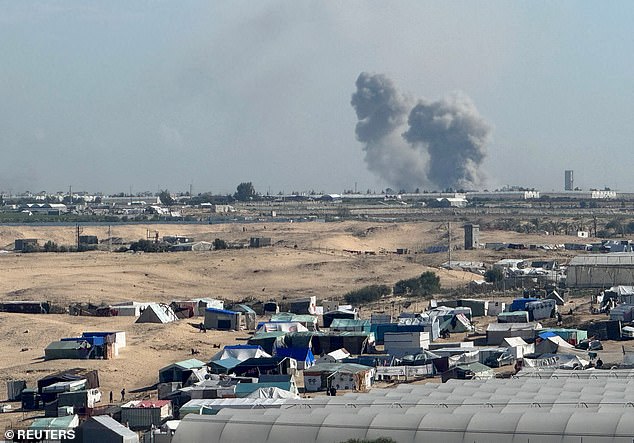
Large areas of northern Gaza, the first objective of the offensive, have been completely destroyed
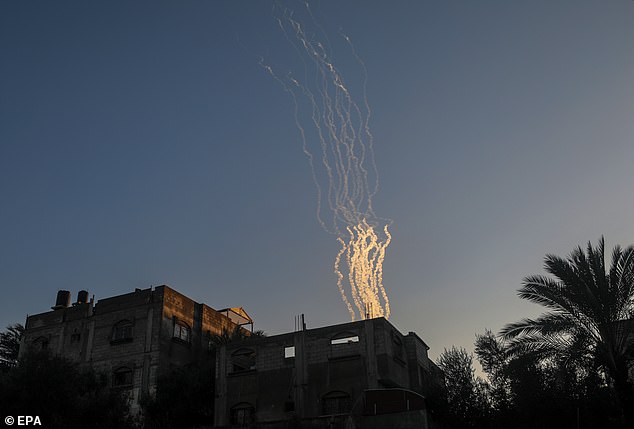
A view shows rockets being fired from the coast of the Gaza Strip towards Isarel, during the Israeli military operation in Khan Younis.
Large areas of northern Gaza, the first objective of the offensive, have been completely destroyed.
Hamas has continued to attack Israeli forces throughout Gaza and says it will not release all remaining captives until Israel ends its offensive and withdraws. Hamas also demands the release of a large number of Palestinian prisoners, including high-ranking militants.
Netanyahu has rejected those demands, calling them “delusional” and saying Israel will soon expand its offensive toward the southernmost Gaza city of Rafah on the border with Egypt.
More than half of Gaza’s 2.3 million people have sought refuge in Rafah after fleeing fighting elsewhere in the coastal enclave.
At least 28,576 Palestinians have been killed since the war began, mostly women and children, according to Gaza’s Health Ministry, which does not distinguish between civilians and combatants. More than 68,000 people have been injured in the war.
More to follow.

